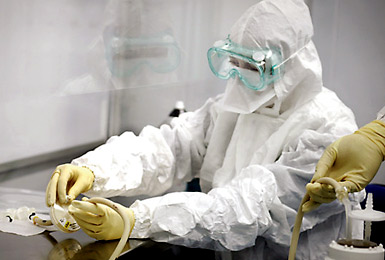Market Report: Bioscience Industry Investigates Innovative Strategies for Growth
The bioscience sector is expanding is reach and taking advantage of economic development policies and incentives that nurture growth.
March 2011

The study advises that the attraction and growth of the bioscience and pharmaceutical industries takes innovative economic development policies that encourage bioscience development initiatives; a focus on agricultural biotechnology, bioenergy, and bioproducts industry subsectors; implementation of programs that build R&D capacity and advance commercialization of research discoveries; improving access to early-stage capital; and tax policies that support the niche.
PricewaterhouseCoopers' "Quarterly Recovery" report, which discusses venture capital and life sciences investments, noted that the top-five regions receiving life sciences venture capital funding during the first quarter of 2010 were San Francisco Bay, Boston, San Diego metro, Orange County, and the Research Triangle.
Biosciences as an Engineering Discipline
California's bioscience companies run the gamut from well-established giants to entrepreneurial start-ups.
"California is the place for bioscience because of our capacity to continually reinvent ourselves. We create our own opportunities and the venture capitalists are there to support us. Take, for instance, Amyris, the synthetic biology company (based in Emeryville), which invented a technique to manufacture an antimalarial drug, and now leads the biofuels sector," says Douglas Crawford, Ph.D., associate director of the San Francisco-based California Institute for Quantitative Biosciences (QB3). QB3 is a consortium of more than 200 laboratories from the University of California campuses at Berkeley, Santa Cruz, and San Francisco. The multidisciplinary institute provides proof-of-concept funding, start-up incubator space, and educational programs.
Dr. Crawford explains that the industry has a nationwide potential for growth: "The problems we're trying to solve in healthcare and energy are huge. Bioscience is transforming itself into an engineering discipline, capable of quantitative analysis. The combination virtually dictates growth."
"For global biopharmaceutical companies, it is important to have an R&D presence in major markets," says Terry Hermiston, Ph.D., vice president U.S. Biologics Research at Bayer HealthCare Pharmaceuticals and head of its new U.S. Innovation Center that opened in San Francisco in January 2011.
"When you look at medical science in the United States, California stands out as a leader with institutions that attract the most NIH (National Institutes of Health) funding," Dr. Hermiston continues. "Bayer's U.S. Innovation Center has a strategic imperative to collaborate on early research with young life science firms and academic researchers. The site we selected in San Francisco puts us in the heart of California's fastest-growing life science hub - with more than 20 young biotech companies and adjacent to UCSF's Mission Bay campus. We will expand our partnering along the West Coast and throughout the U.S. from this strategic location."
Bayer Healthcare Pharmaceuticals also has facilities in New Jersey and Washington State.
Project Announcements
Momentous Expands Summit County, Utah, Operations
12/21/2025
Eli Lilly and Company Plans Huntsville, Alabama, Manufacturing Operations
12/18/2025
BioTouch Expands Columbus, Georgia, Operations
12/11/2025
BioStem Technologies Plans Boca Raton, Florida, Headquarters Operations
12/06/2025
AstraZeneca Expands Frederick-Gaithersburg Maryland, Manufacturing Operations
11/29/2025
South Korean-Based Nature Cell Plans Baltimore City, Maryland, Production Operations
11/19/2025
Most Read
-
The Workforce Bottleneck in America’s Manufacturing Revival
Q4 2025
-
Rethinking Local Governments Through Consolidation and Choice
Q3 2025
-
Lead with Facts, Land the Deal
Q3 2025
-
Investors Seek Shelter in Food-Focused Real Estate
Q3 2025
-
Tariff Shockwaves Hit the Industrial Sector
Q4 2025
-
America’s Aerospace Reboot
Q3 2025
-
The Permit Puzzle and the Path to Groundbreaking
Q3 2025



